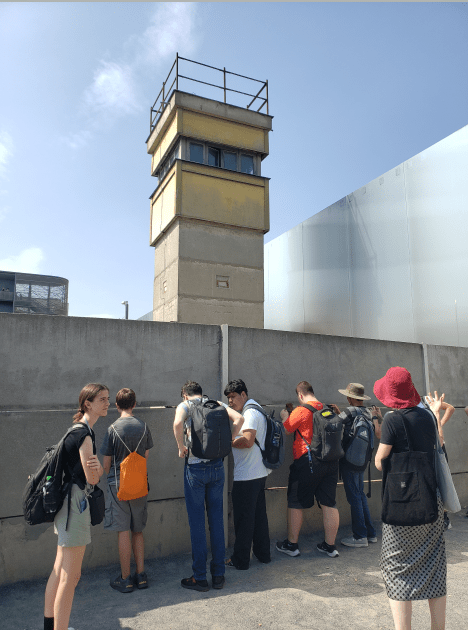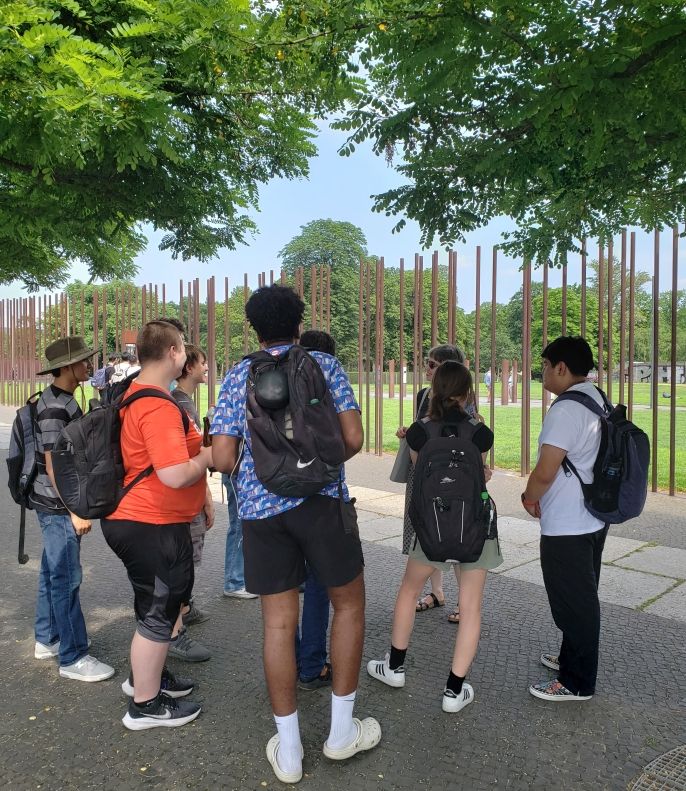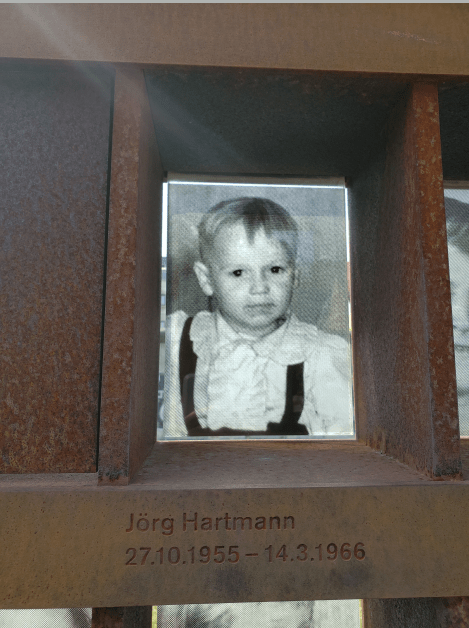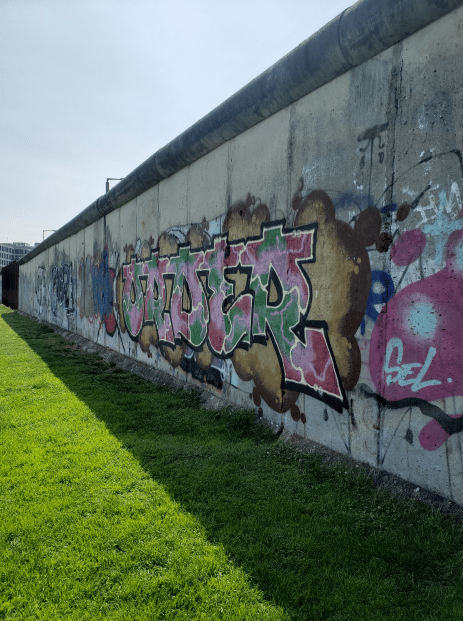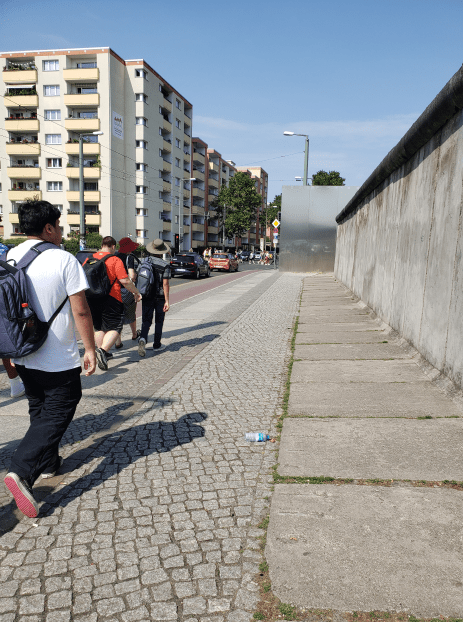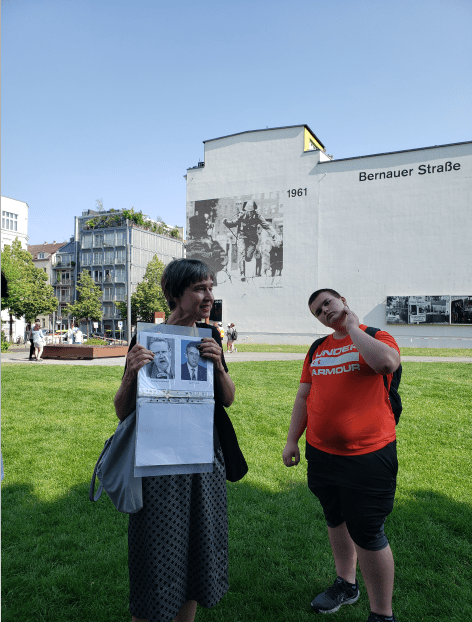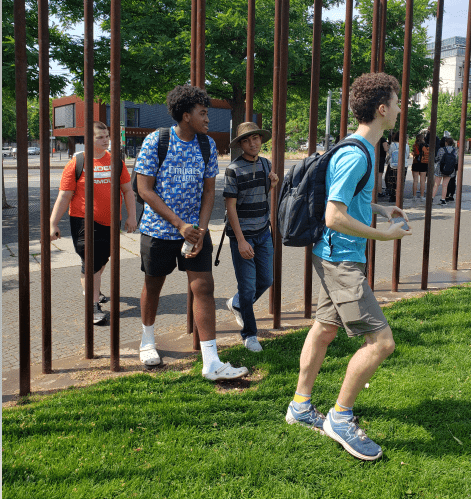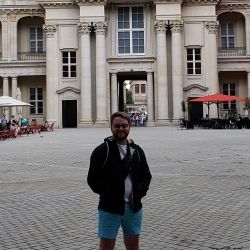Understanding the Memory of the Berlin Wall
On Thursday, Levels 0 and 1 visited the Berlin Wall memorial in Mitte. We had two lovely tour guides who were excited to teach us about the history of the wall, and what is left in memorium today. Our students have learned *about* the Berlin Wall in history classes throughout their education, but for many of them, this was the first time they would get an in depth lesson of the horrors that the wall really brought to Berliners on both sides. The day was hot, and the sun was beating down, but our kids powered through, as there was so much to be discovered.
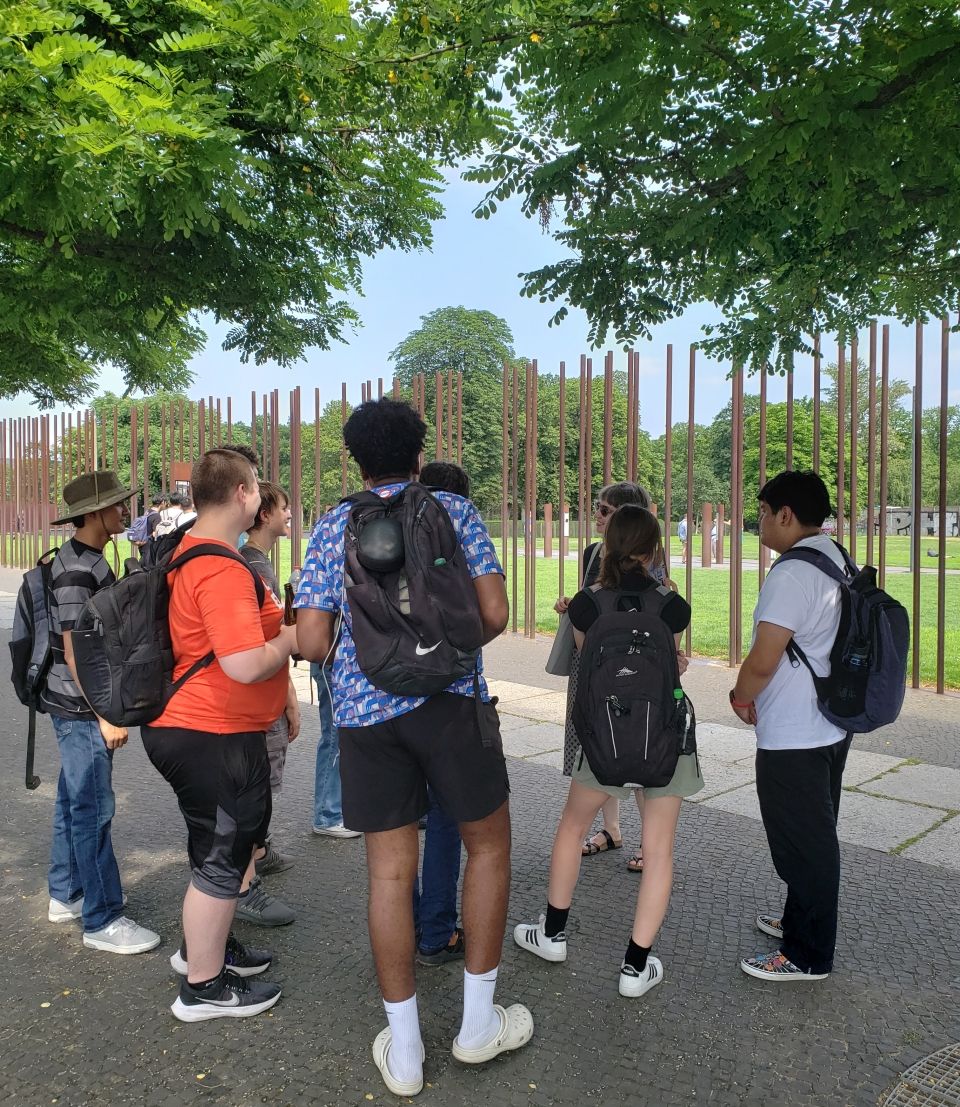
The rusty posts mark the wall. Berliners were obviously quite eager to knock down every piece of the wall they could get their hands on once it fell, which means it was difficult for the memorial to be built using the original pieces in their originial places. Today, these posts stand where the wall once did. They are traversable to show that Berlin has progressed beyond its division, and rust colored to show that it is only a thing of the past. We started on the west side, where Heidi and Martin led us towards the east. When we learn about the Berlin Wall, we are rarely taught that it was actually two walls. One wall would have been too easy to climb, so in between lay the "death strip." Anyone who entered the territory was given 2 warnings (a shout, then a shot), before a non-lethal shot was to be fired. If this person still managed to reach the area close to the western wall, the guards had shoot to kill orders. Shortly after its construction in 1961, many easterners still attempted escaping between the walls, thinking that none of the guards would obey these orders. Many learned the hard way that they indeed would, which quickly exposed to East Germans and the world alike, that the wall was built to keep easterners in, not to keep westerners out like the Soviets said...
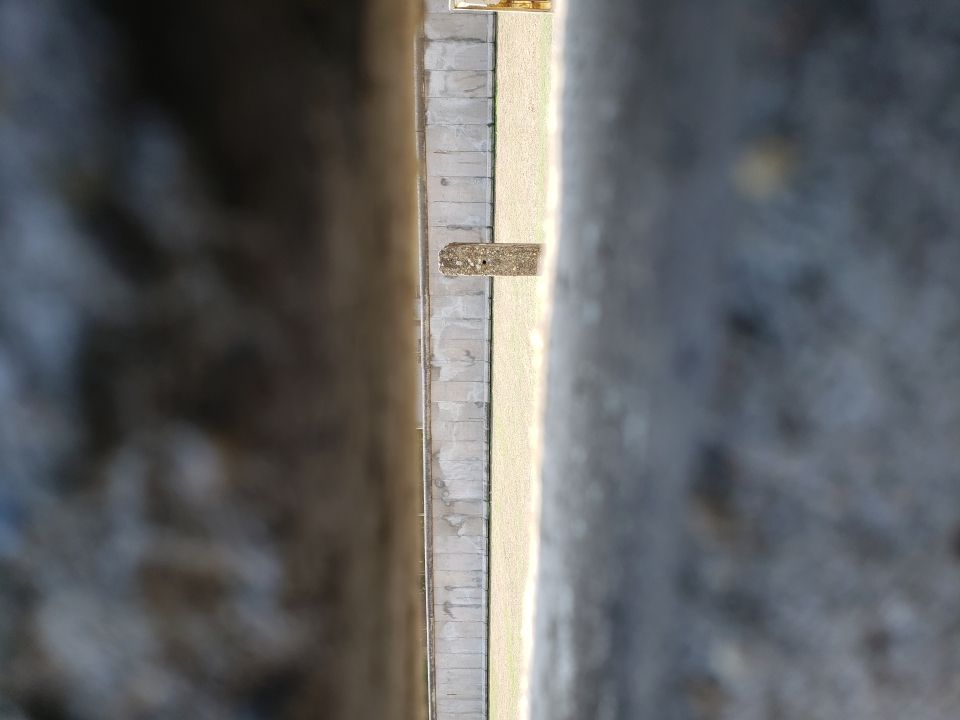
As we countinued our tour, we walked along the death strip where we were shown many important historical markers. Chapels, cemetaries, and houses were all trapped between the two Berlins. Our students were able to peacefully traverse the strip, knowing the whole time that so many Berliners from 1961-1989 would have done anything for the same opportunity. It was a sobering journey, and we carried heavy hearts with us each step of the way. We were greeted by the Windows of Memory, which memorialize each of the victims who were killed trying to cross within the city. Some families chose to not have their relatives pictured, but many names and photos of real people starred right back at us as we looked into the past. A few photos of children were particularly striking.
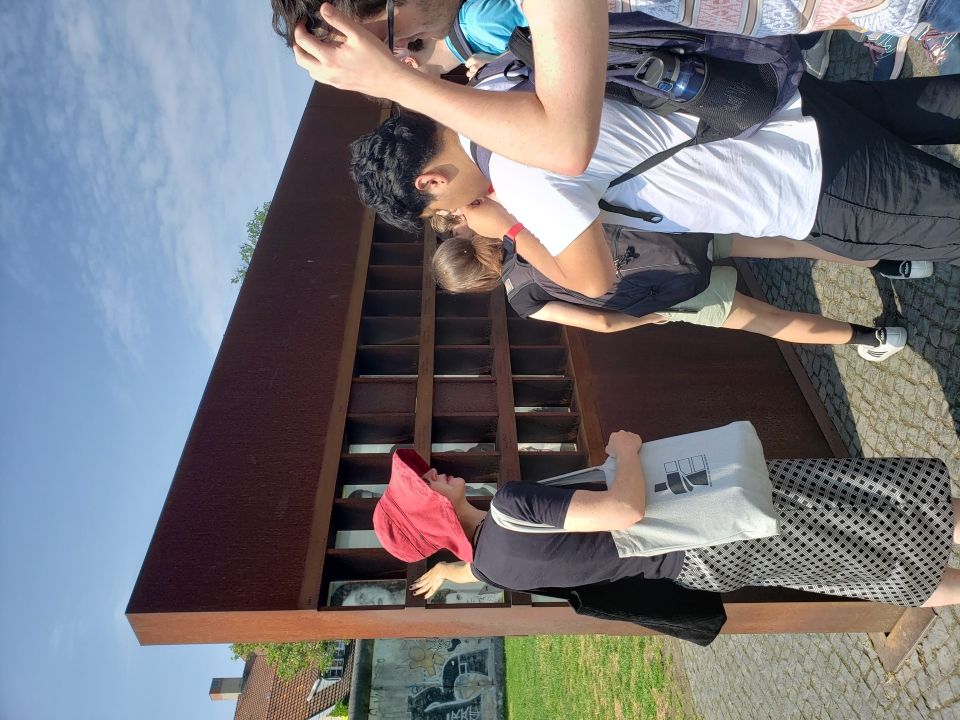
The memorial doesn't only show the bad though. Many escape attempts were successful, including some mass escapes. People jumped from windows, tunneled under, flew over in hot air balloons, as well as other ways. We were able to watch a dramatic video of a woman who was caught by the arm while jumping from an apartment window, but pulled to safety by West Berliners waiting for her before the East German guards could pull her back in. We walked along the path of a 1 meter by 1 meter tunnel that 57 people crawled through to escape. Each step was a reminder that the line between east and west had not been chosen by those living on either side, but by governments looking for more and more control.
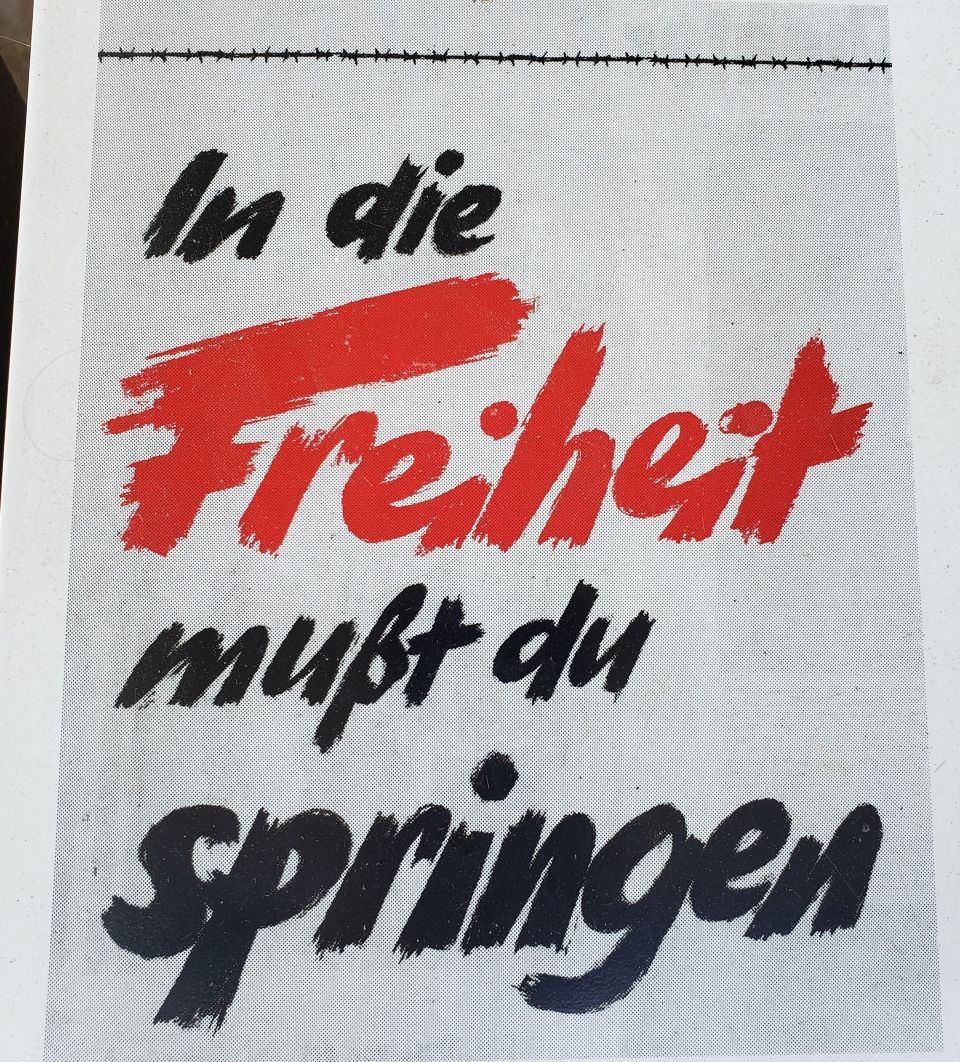
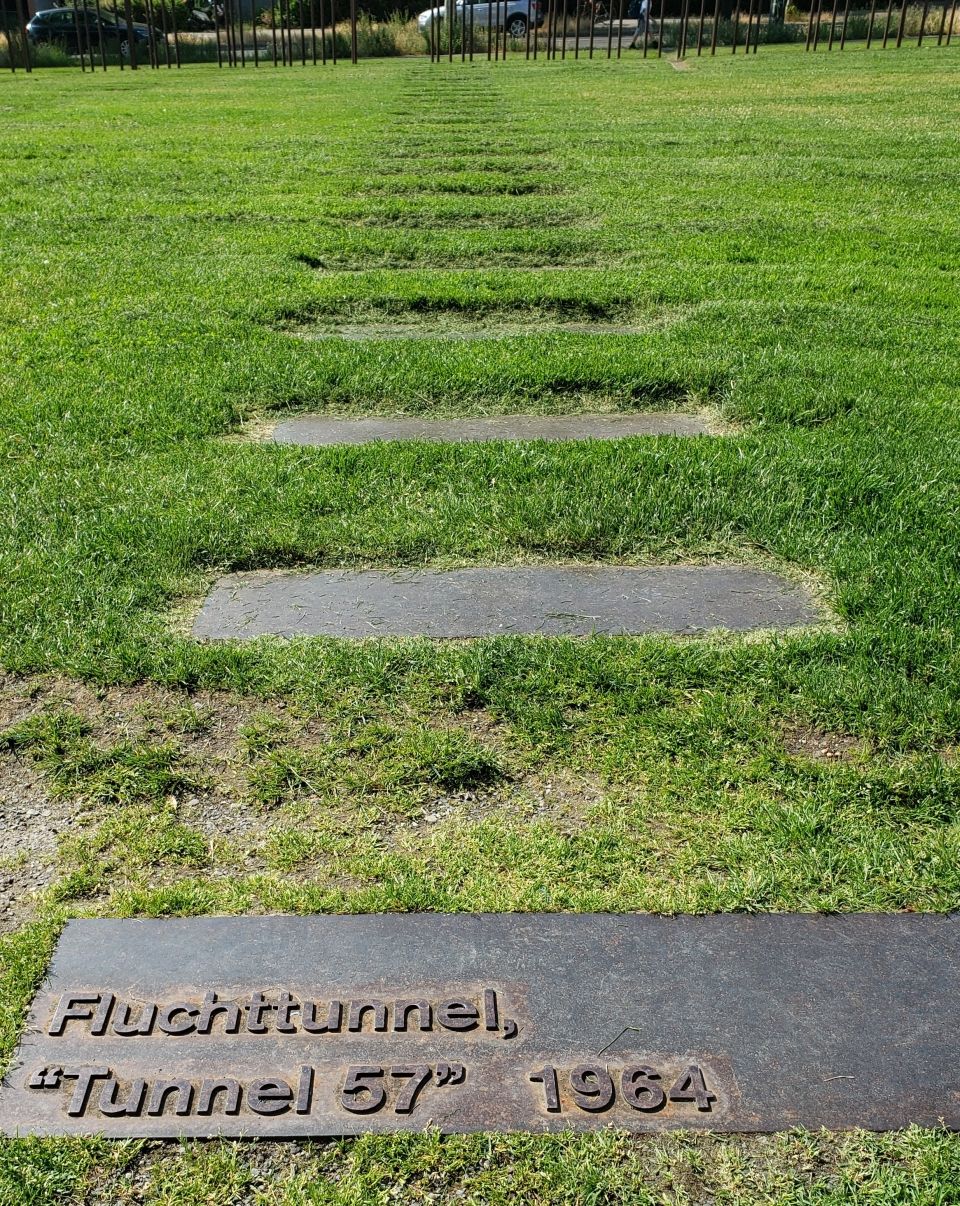
As we reached the end of the memorial, we were told the story of the day the wall fell. November 9th, 1989. The East German government had given the green light to allow *some* free travel to the west. Citizens would have to have a passport & a Visa, and go through a long process, but it would finally be possible after so many years. To give the announcement, an exhausted Günter Schabowski was chosen, but he failed to review his notes well enough before going live. Once the message of free travel had been given, a reporter asked when the boarder would be opened. Though the DDR intended for this to happen over the next few months, Schabowski replied ,,Nach meiner Kenntnis ist das sofort, unverzüglich" ("to my knowledge it is immediately, without delay"). Tens of thousands of Germans from the east and west flooded to the wall that night, and after arguments with the boarder guards, the gates were opened. For the first time in over 28 years, people moved freely from one side of the city to the other. The largest party in German history ensued, and the end of the Cold War was marked. Our students heard the story with smiles on their faces. A place that had once meant so much pain and suffering, was now one of victory and unity. We debriefed the day and talked about all the things we had learned, and the vibes were good. We felt appreciative of our ability to visit any part of Berlin we want to, and we felt appreciative of all those who fought so hard for decades to give us that right. We learned many things on our excursion to the Berlin Wall Memorial, but as important as any other, we learned to be thankful that it remains as nothing more than that, a memorial.
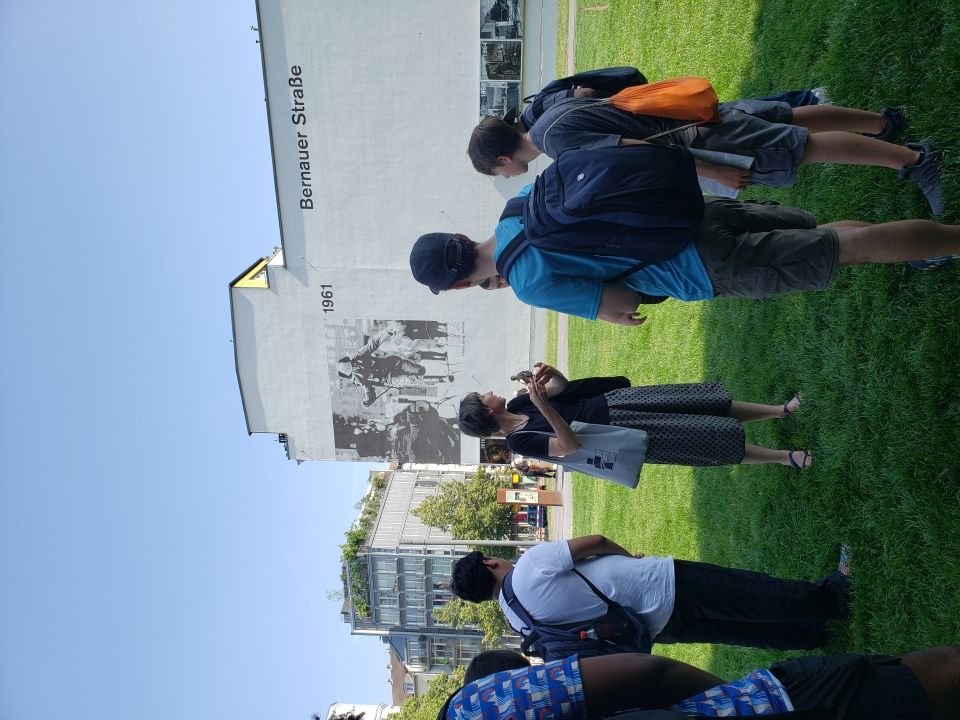
Related Posts
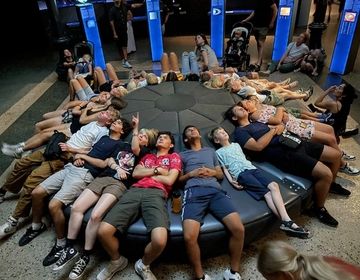
Museum für Naturkunde Excursion
Berlin Language & Culture students visited the Museum für Museum für Naturkunde – Leibniz-Institut für Evolutions- und Biodiversitätsforschung (Museum of Natural History – Leibniz Institute for Evolution and Biodiversity Science)... keep reading
Exploring the Reichstag Dome
On Monday, students from the Language and Culture program had the opportunity of visiting the iconic dome atop the Reichstag, the seat of Germany’s federal parliament (the Bundestag). As they... keep reading
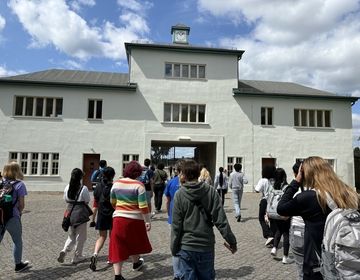
Sachsenhausen Memorial Visit
On Wednesday, students of the Language and Culture program visited the Sachsenhausen concentration camp. Students were very interested in learning about the history of the camp and how it came... keep reading
